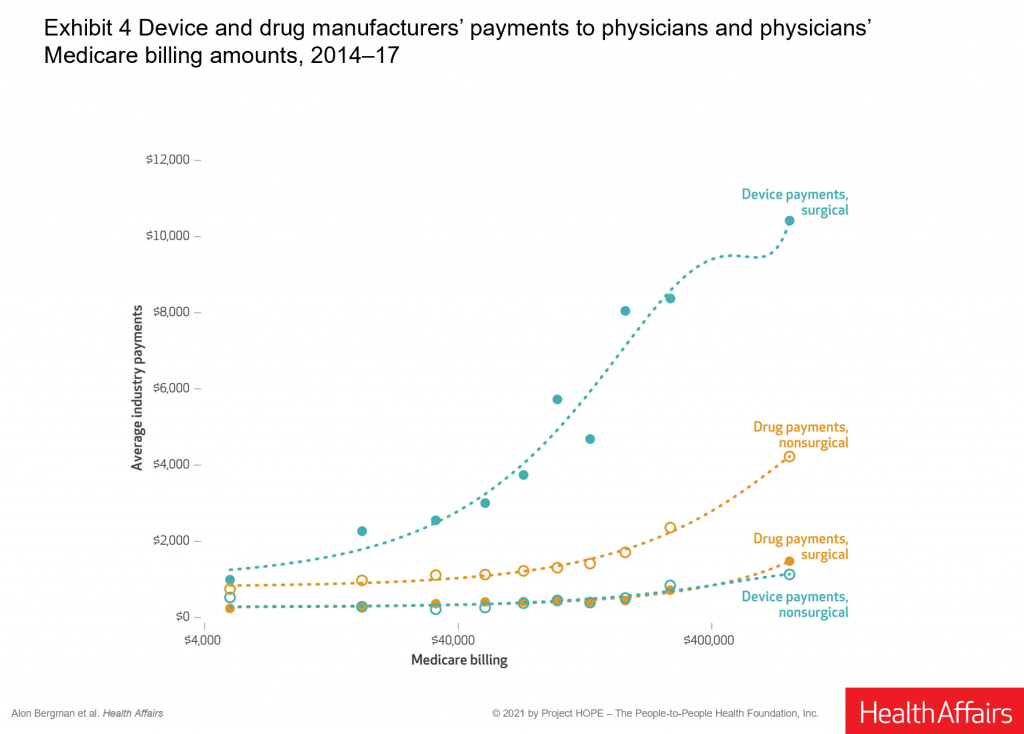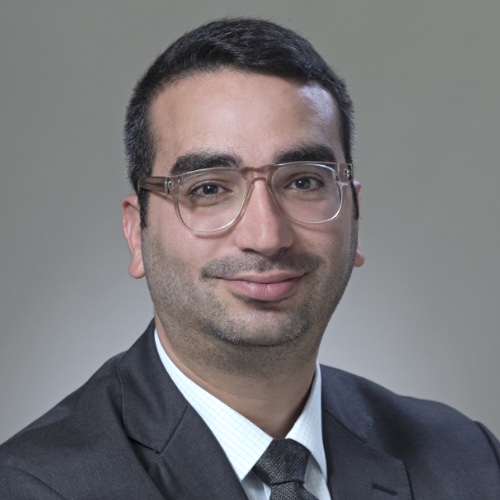Blog Post
Payments to Physicians from Medical Device Firms
Chart of the Day

In Health Affairs, LDI Senior Fellow Matthew Grennan, Ashley Swanson, and I present new evidence on medical device firms’ payments to physicians. Device firm relationships with physicians tend to be more involved than those between pharmaceutical reps and prescribers, but have received far less scrutiny.
Using Open Payments data, we found that device vendors paid physicians $3.62 billion over the course of 2014-17, about ten percent more than what pharmaceutical firms paid physicians over the same period. The difference in payments is even larger when measured as a fraction of industry revenue—payments to physicians represented 1.7 percent of implantable medical device industry revenue during 2014-2017, more than seven times the percentage of drug industry revenue spent on payments to physicians. The nature of payments differed across industries as well, with payments from device firms more often being related to product development and training than payments from drug firms.

As show in the chart above, drug and device vendors exhibited different patterns in how they targeted physicians for payments. While both device and drug firms paid on average more to physicians with higher Medicare billing, payments from device firms to surgical specialists were significantly more correlated with Medicare billing than payments from drug firms to either surgical or non-surgical specialists. Surgical specialists at the top decile of the Medicare billing distribution received on average 2.5 times what nonsurgical specialists in the top decile received from drug vendors.
More than two thirds of all device payments were made by only ten medical device firms. Using FDA data, we found that these firms also held large shares of approved devices in the markets for cardiovascular, neurological, orthopedic, and surgical medical devices.
While firm payments are typically of small value relative to physicians’ salaries, they can shed light on the intensity and frequency of interactions between firms and physicians. Medical device firm representatives often develop close relationships with physicians. They provide education and technical assistance in operating rooms, and they seek regular feedback on products. Such interactions may facilitate training on the use of existing products and innovation of new products, but they may also represent opportunities for firm representatives to influence physicians’ treatment decisions.
We need further research on how these close relationships between device makers and physicians relate to physicians’ choices of products, the prices paid for these products, the development of new breakthrough medical products, and device market concentration. Increased data transparency, like requiring unique medical device identifiers in medical claims, will be critical to these efforts.
The study, Medical Device Firm Payments To Physicians Exceed What Drug Companies Pay Physicians, Target Surgical Specialists, was published in in the April 2021 issue of Health Affairs. Authors include Alon Bergman, Matthew Grennan, and Ashley Swanson.